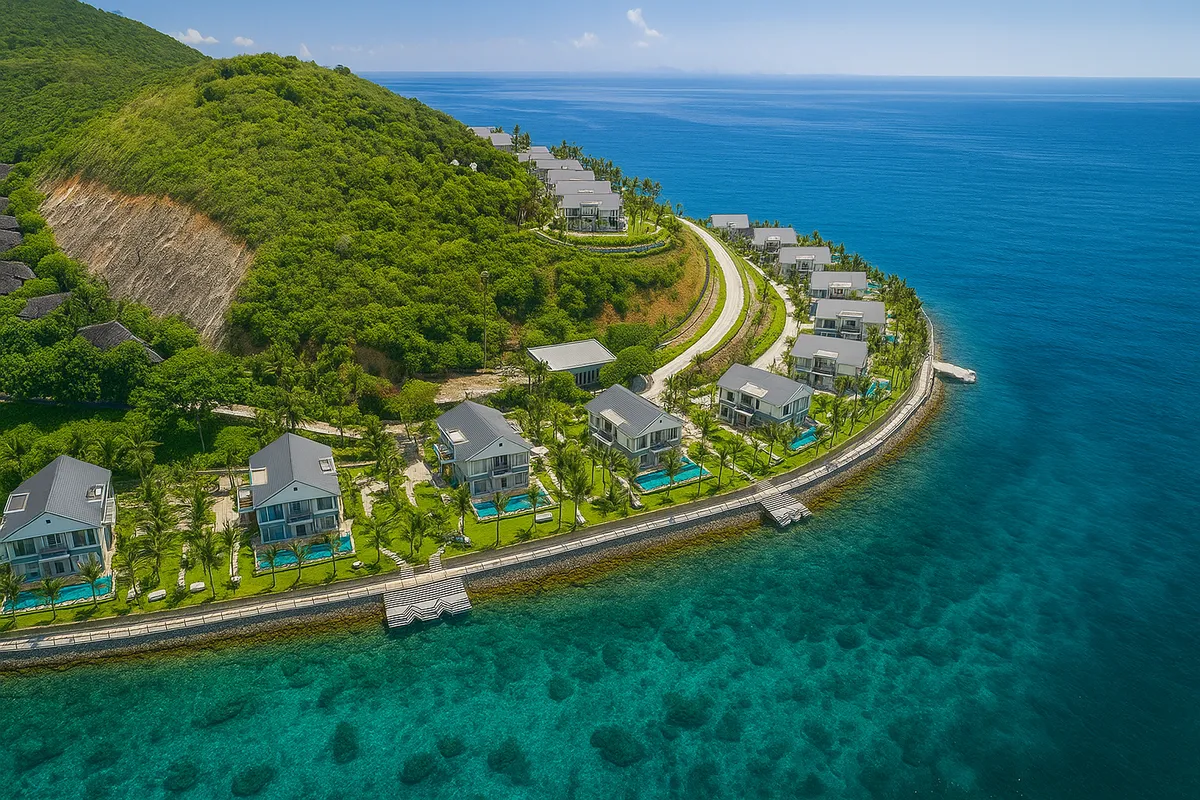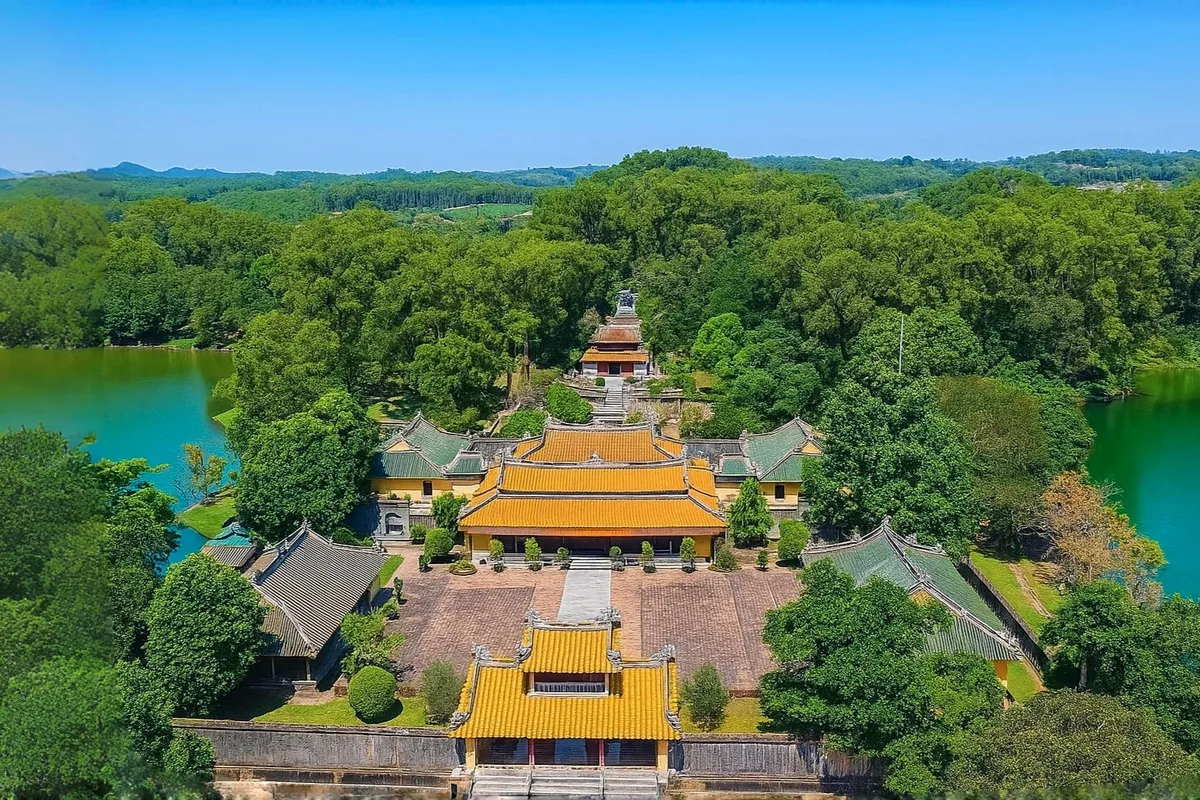Cua Viet Beach - A stop for those seeking peace
- Wednesday, May 28, 2025, 16:04 (GMT+7)
Cua Viet Beach - A stop for those seeking peace
Cua Viet Beach opens like a salty dream between the land and sky of Quang Tri. It is where the deep blue waters of Hieu River blend into the vast ocean and the murmuring waves tell stories that never end. In the soothing sound of the wind, every ripple sings old tales, slipping through rows of casuarina trees, soaking into the grains of sand and earth that have weathered many seasons of wind.
Located in the town of Cua Viet, Gio Linh district, about fifteen kilometers from Dong Ha city, this place is not known for flamboyance or crowds. Yet in its quietness, Cua Viet offers a strange pull like a voice from memory. The white, flawless sand stretches to the horizon, calm like a blank page. Each step on the sand feels like touching history, as if continuing an unfinished story of a silent sea.
Cua Viet does not need lights to be radiant. When the sun is still dreaming near the horizon, the sea wears a thin veil of mist like silk. The air is so pure that one can smell salt, green moss and the breath of the ocean. The waves do not scream but whisper like a lullaby from mother earth meant for those in need of a place to return.
Hidden beneath the layers of sand are quiet tales of the past. During the Champa kingdom, Cua Viet was already a vital trading port where boats from both the north and south passed through, bringing voices from distant lands. In the Nguyen dynasty, it was known as a bustling seaport, a hub of prosperity for central Vietnam, where merchant ships of all sizes waited for the wind to sail. Locals still say that buried under the sand is an ancient stone statue, once part of a Champa temple, now sleeping deep in time’s stillness.
Then came war like a violent storm. This land saw moments when the country was divided. Not far from Cua Viet lie Hien Luong Bridge, Ben Hai River and the Vinh Moc Tunnels. These names recall a time of smoke and fire. Yet even as bombs tore the earth apart, the sea remained loyal, gently singing love songs of peace as if its rhythm had never faltered.
Today, Cua Viet is a place where time slows down. Along the shore are old villagers collecting seashells, children playing with waves, and the distant eyes of fishermen returning after a night drifting at sea. Life here is neither rushed nor decorated. Every movement is slow and tender, enough for a traveler to feel their heart ease. There are places that need no invitation. A single visit makes you want to stay for a long time.
The sea here is gentle like a mother, embracing souls worn by city life. The best time to visit Cua Viet is from December to April. This is when the sea turns its bluest, the sunlight pours down like honey, and the breeze is just enough to lift the hair with each breath. In the morning, you can walk along the shore, listen to the soft wind and watch the sun stretch behind coconut trees. In the evening, the sunset paints the sea in hues of pink and red, turning the water into a giant mirror reflecting the dreams of those searching for peace.
The food in Cua Viet is simple. A single grilled fish on glowing charcoal, a bowl of spicy fish sauce and a few wild herbs are enough to awaken every sense. Some dishes must be tasted here to be understood completely, like chewy tapioca dumplings, rich rice porridge and crispy flat cakes with the aroma of fried shallots. The people of Quang Tri are warm and sincere, as salty as the sea and as genuine as the crashing waves.
If you want to explore more, a short boat ride can take you to Con Co Island, which still holds its primitive and quiet charm. Or head north to the underground world of Vinh Moc Tunnels, once home to many people during the war years. Every place tells a part of the story, connecting past and present through a language that needs no words.
One mysterious tale that few people know is that on moonlit nights, flickering lights sometimes appear at the edge of the waves, said to be ghost ships returning from the past. No one has confirmed it, but no one denies it either. In a place like Cua Viet, anything seems possible in the soft respect for nature.
The legend of the mermaid turned to stone is still told by grandmothers to their grandchildren. A sad tale of a fishing village girl who waited endlessly for her beloved who never returned. Her tears turned to pearls. Her body became stone resting by the sea for a thousand years. That rock has now been worn down by the salty sea, but the story remains as whole as it once was.
You do not need a map or a fixed plan. The journey to Cua Viet begins with something very simple, the need to breathe, to live and to listen to the silent voice inside yourself. Just arrive at Dong Ha Station, take a small bus toward the coast and within thirty minutes the blue of the sea spreads before your eyes. From major cities, you can fly to Dong Hoi or Hue, then continue your journey along the road that leads to where the waves still whisper as they always have.
Young travelers do not come to Cua Viet for fame. They come for something much simpler, a place that does not ask for anything. A place where you can lie on the sand, feel the wind brushing your hair and forget the chaos of life. A place where you could write a caption that makes everyone want to leave right away: “Not every place needs crowds to be beautiful, only a sea that speaks and a heart willing to listen.”
When the sun sets across the water and the last light fades behind the coconut trees, Cua Viet becomes an unfinished song. And when people leave, they carry with them a melody of their own that echoes endlessly. It is a place that needs no words. Just being there in silence is enough. Some beaches do not belong to the eyes. They belong to the soul.

 CHECKIN.VN
CHECKIN.VN








Share on